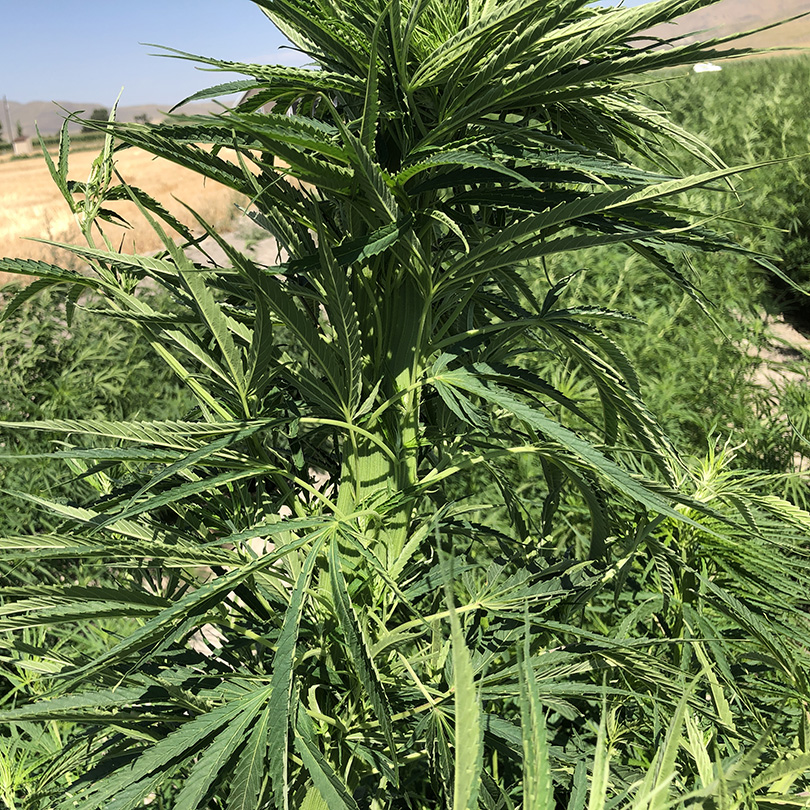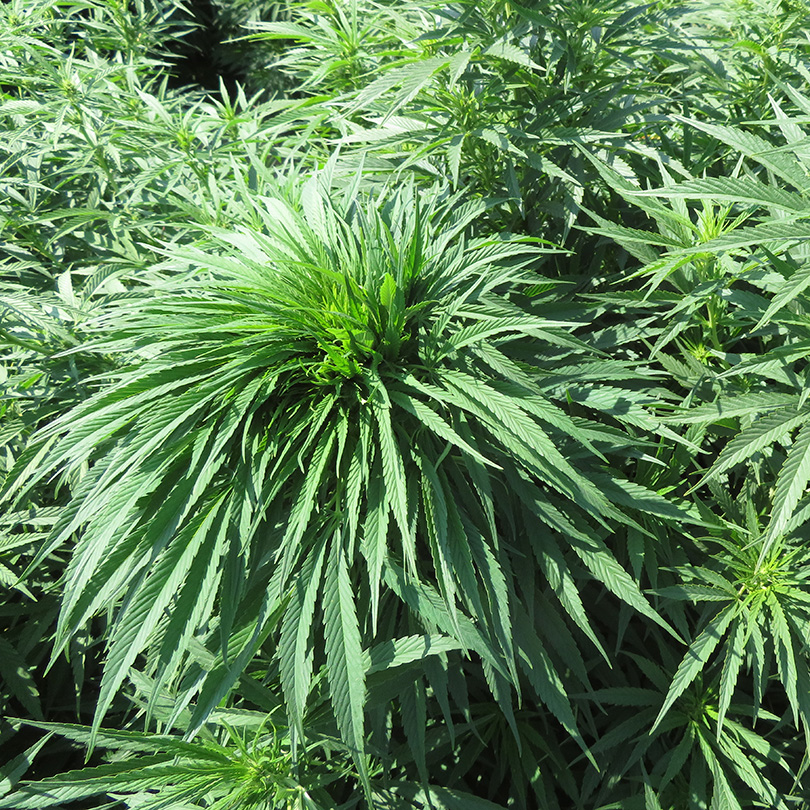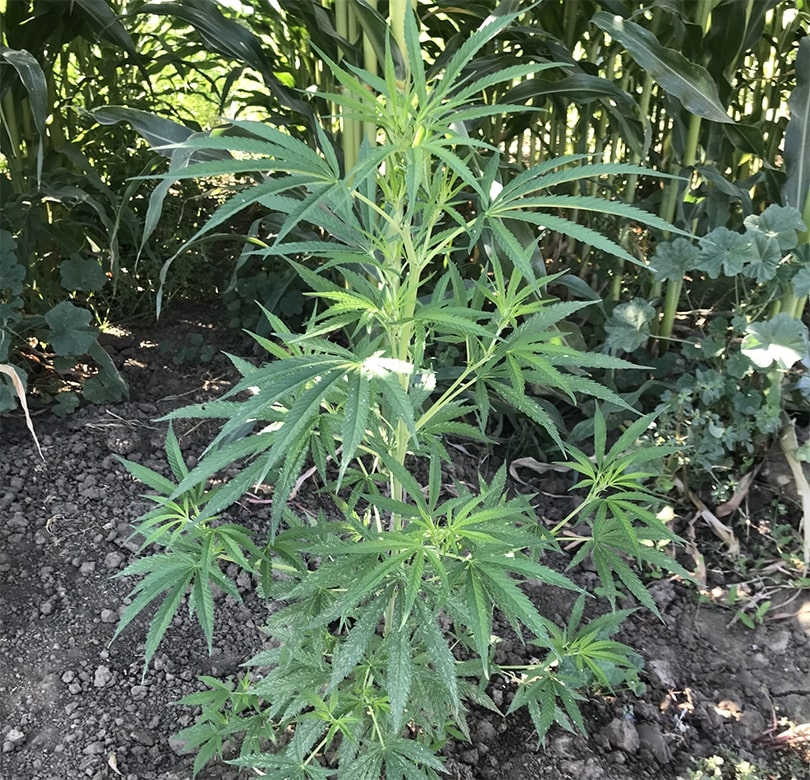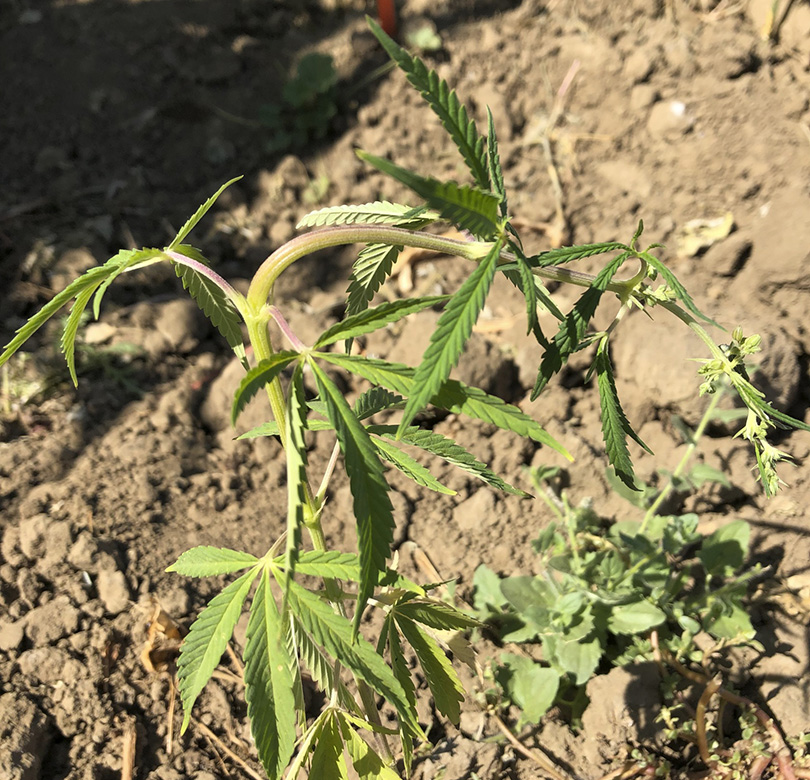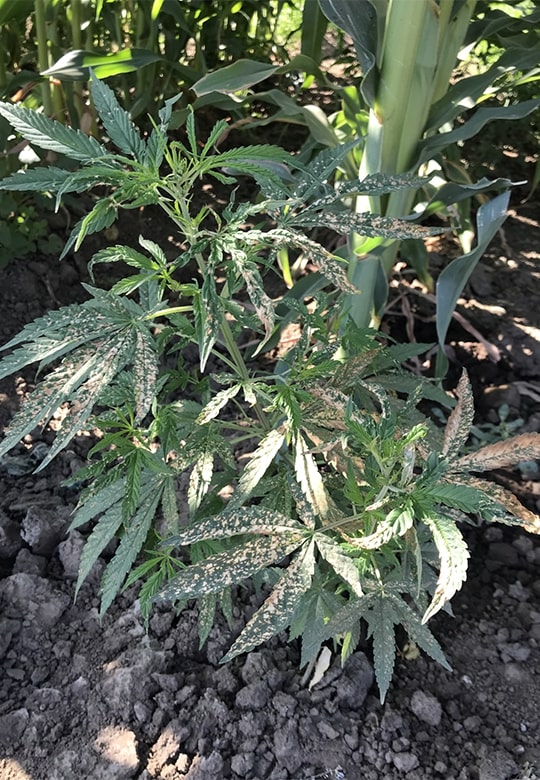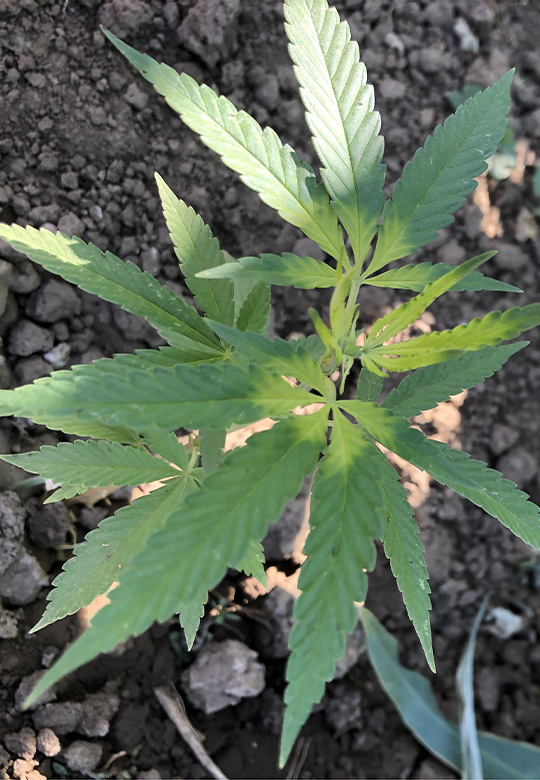Herbicide Damage
Caused by: misapplication of herbicides (e.g. dicamba, 2,4-D, atrazine); herbicide drift or volatilization; herbicide leaching or run-off; contaminated soil amendments
Hosts
- Hemp is susceptible.
Symptoms
Symptoms include twisted or bent stems and leaf petioles, cupped leaves, abnormal growth, yellowing and browning leaves, dead plant parts, dotted or speckled necrosis, stunted plant growth, narrow leaves, and chlorosis around leaf margins and interveinal areas of leaves.
Time for Concern
Following application or misuse of herbicides. It is also good to monitor plants for a few weeks after manure or compost applications.
When and Where to Scout
- Herbicide damage can be difficult to verify, so identify by eliminating other possibilities.
- Look for distorted growth and chlorosis or necrosis on leaves and/ or stems.
- Watch for areas where multiple plants of different species show the same symptoms.
Threat Level
Hemp is not killed by minimal exposure to the common broadleaf herbicides 2,4-D or dicamba. With soil-applied herbicides, soil removal may be necessary.
Occurrence in Utah
Typically found in low numbers in outdoor production; higher numbers indoors.
Management
- Apply herbicides only when necessary and carefully follow the label.
- Be especially careful with soil sterilizers; susceptible roots can grow beyond expected areas.
- Exercise best management practices to reduce or eliminate the need for herbicides.
- Apply activated charcoal to soil where soil-active herbicides were used.
- Spread dust or soil on exposed plant surfaces to detoxify glyphosate.
- Ensure compost comes from a reliable source and has not been contaminated by herbicides.
When to Consider Treatment
Once a plant has been exposed, no treatments are available beyond good plant care or plant removal.
Look-alikes
Distorted growth on leaves and/or stems, nutrient deficiencies (chlorosis) in leaves, viruses.
The University of California IPM Program has additional images of herbicide damage on hemp. Many images included here are used from that site, with permission.
Photo Credits
- USU Extension IPM Program
- UC IPM Program


